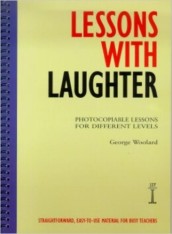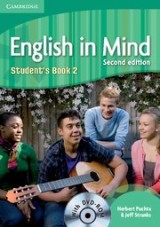I contacted Cambridge University Press last month. I said ‘If you send me a book, I’ll  review it on my blog.’ To my surprise, a copy of Classroom Management Techniques by Jim Scrivener turned up in my pigeon hole at work. This was very generous of them, but it’s been out for a while and reviewed plenty of times so I’m not going to stick to my promise (sorry). Instead, I’m going to write a few different posts about sections in the book, choosing things that I agree with, new things I will definitely try out, and some things that I feel differently about as a practising teacher.
review it on my blog.’ To my surprise, a copy of Classroom Management Techniques by Jim Scrivener turned up in my pigeon hole at work. This was very generous of them, but it’s been out for a while and reviewed plenty of times so I’m not going to stick to my promise (sorry). Instead, I’m going to write a few different posts about sections in the book, choosing things that I agree with, new things I will definitely try out, and some things that I feel differently about as a practising teacher.
Two things I should say. First, you can find a good overview of the book here, and a nice review here. Secondly, the fact that I disagree with some things written in the book doesn’t mean I dislike it. We had a copy of it at my last school (don’t tell CUP I’ve read it already), and I think it’s great – actually I’d say it’s an essential book for any staffroom.
I’m starting with the final section in the book which is about lessons. The last 50 pages of Classroom Management Techniques offer tips and activities related to 10 different topics, which are:
starting lessons low-tech resources
using the board working with computers
the coursebook post-task
time and pace closing lessons
handouts closing courses
I’ll take a look at 5 of the above and share some thoughts.
Starting lessons
I totally agree with… Students need to be engaged straight away, whether they are doing a review task, a warmer that gets them settled, an energiser, etc. All these suggestions from Jim are great.
 a classic resource for ‘joke of the day’
a classic resource for ‘joke of the day’I’m going to try… adding more running themes into my classes. Scrivener mentions having things like ‘joke of the day/anagram of the day/headline of the day’ activities on the board to engage students from the off. I often have an anagram game as a settling activity but I need to mix things up a bit.
I’m not so sure about… ‘being the gatekeeper’. Scrivener suggests you position yourself next to the door as students enter and greet them as they arrive, tell them where to sit, give them a task to start working on, etc. This is a nice idea and is assertive, but it depends on your class. I can’t do this because my students filter in to class gradually during the first 30 minutes, depending on when their parents can drop them off! I have a task waiting on the table for them to do (normally either anagrams, cryptograms or crosswords that review vocabulary from the last class), and I have a set seating plan so they know where to go and what to do. For the ones that are really late, they enter with minimal fuss and I quickly tell them the task so they can get up to speed.
Using the board
I totally agree with… everything in this section, in fact it seems I unwittingly ripped it off in my own post on board work. I must have got most of my ideas from this book and forgot! Still, Scrivener mentions two important points that I didn’t cover. The first is the need to ensure the clarity of your writing. The other is to ask students if it’s ok to rub items off the board before you do it!
must have got most of my ideas from this book and forgot! Still, Scrivener mentions two important points that I didn’t cover. The first is the need to ensure the clarity of your writing. The other is to ask students if it’s ok to rub items off the board before you do it!
I’m going to try… writing ‘game show’ style. This is a tip to stop you writing on the board with your back to the students. You just need to develop the technique to both stand facing the students and write on the board at the same time. I’m rubbish at this, I need to improve!
I’m not so sure about… using an interactive whiteboard as an ordinary board. I think I might need interactive whiteboard training, because my ability to write on them is poor. I don’t have different colour pens, so I find marking stress, form, etc really cumbersome. It’s good to have words stored on a flipchart, but they are not always there on the board unless I flip back to them, which tends to disrupt the lesson a bit. I have both types of board in the classroom, and I’m very thankful for that!
The coursebook
I totally agree… that working with a coursebook involves being selective. You don’t have to use everything. Also, the idea that the order of coursebook activities is not set – although some coursebooks seem to follow very logical structures. Adapting and exploiting coursebook materials are two things I’ve done a lot of recently. It’s been fun trying this out as I’ve never really used a lot of coursebooks before.
 my current coursebook
my current coursebookI’m going to try… getting to know my coursebook. I normally start teaching from a book without giving much thought to the method that underpins it. This is bad practice. Obviously, after a while I start to see patterns and work out what motivated the writer to devise certain activities. I should probably take more time to explore the coursebook and read about it before teaching from it.
I’m not sure about… democratising the coursebook. Scrivener talks about asking learners their opinions about what they want to do, how they want to do it, etc. Sometimes I ask students how they want to do tasks, like in pairs or groups, but I normally consider what I think is best for certain activities at the planning stage. My students seem to prefer being told how an activity is organised, however another teacher in my school says he ‘democratises’ all the time. I wonder whether giving students more control over how we work with the coursebook might be useful in my classes…
Low-prep resources
I totally agree… with having a vocabulary box. Jim says:
keep a small box and a set of blank cards. When interesting or tricky vocabulary comes up, the teacher or student can write them on a new card: word on one side, notes on the other (meaning, pronunciation, difficulties, etc.). As the collection of cards grows, they can be used to revise and recycle the items (Scrivener 2012: 272)
Lovely. I mentioned before that I keep a word list for each class to help with revision. I might use a box now so students can contribute to it.
I’m going to try… flipcharts. As in, real flipcharts, with an easel, board pens, etc. I don’t know when I can try this as they don’t have them at my school, but I like the idea of students working together as a group and sharing ideas on a flipchart. It’s a good, permanent record of their ideas too. One thing I will say about flipcharts – I found them the WORST tool for teacher presentation EVER. One school I worked at chose to use flipcharts in place of whiteboards, it was the biggest waste of paper ever.
I’m not so sure about… posters. My students enjoy creating posters, and they take a lot of pride in their work. They also like collaborating on them. However…
1) taking pride normally means taking a lot of time
2) working together means they can’t finish posters for homework, meaning more class time
3) they never seem to use much English when they make posters
To be fair, the problem is probably the way I set up poster tasks. I should reflect on this I think.
Closing lessons
I agree… that encouraging student reflection is a great way to close lessons. Jim suggests some great methods for doing this – see pages 285 and 286 of the book for these!
I’m going to try… getting pairs to write a letter to absent students, in which they summarise what happened in the lesson and what they learnt. This sounds really fun and great for reflection!
I’m not so sure… how well I actually close my own lessons. This section of Scrivener’s book is well worth a look.
This is a great piece of ELT literature to use for reflections. I’ll cover another section of the book at some point soon – and perhaps answer some of the ‘questions for reflection’ that appear in each chapter.
Categories: CELTA tips, General, teacher development

A lovely blog post Pete and thank you for linking to my book review.
LikeLiked by 1 person
Hello Pete
I have just read your article in the current ETP which prompted me to have a look at v your Blog and brought me to this page.
First. I think this way of reviewing a book is excellent. Having a practitioner select ideas and approaches to try out and then react to, is a real winner. I want to know how things work in the classroom. i want to know limitations as well as benefits. Our teaching contexts are so different that this approach reminds us that when we read a methodology book, the ideas just might not fit us or may need bit of ‘adjusting’.
Second. I have been teaching for a long time but now I’m mainly a trainer. I’m always on the look out for ideas that I can use with trainees (mostly on CELTA) that will make sense to them and have a direct application. There’s so much being flung at a trainee on a course that trainers need to be selective. I think your blog is very accessible and entirely practical. I’ll pass on the link.
Third. Some ideas on the approaches you have reviewed.
Posters: I wonder if you have considered the ‘flipped classroom’ approach to poster work. You would get students to source, create and experiment at home. So for example, you want students to make use of a range of structures and /or vocabulary (you said they don’t seem to make much use of language when you use poster design activities in the classroom). Students are assigned poster ‘teams’, topics and a small range of structures/vocabulary. Each student researches their ideas before the lesson. The poster has to contain an example of the target language from each student and so part of the lesson work is now on reaching a consensus and deciding what fits together.
Word box/bad: I’ve used this for a long time. I got students to decide on ‘word of the day’, ‘word of the week’. We used the words for games and quizzes at the beginning and end of lessons (backs to the board, define to a partner, truth and lie, etc.
I also got students to pick the items they wanted to learn from the selection in the bag/box. We kept it small and manageable. Ss sometimes took it in turns to design their own quizzes at the end of the week/a few weeks.
Coursebook democratising: I have worked with a lot to teachers in the private language school context. In practice they live and teach by something called ‘pacing’. You have to cover page 12 to 14 in this lesson. Students need to have covered Units 1 to 6 in 4 weeks, and so on.
Many teachers are constrained in this way by management and marketing of courses. So giving students a choice in this way would be pretty difficult.
I also wonder how a teacher can ensure that everyone gets a choice.
Sorry if these things have been added or discussed before.
Can I finish by saying ‘thank you’ for your insights and ideas. I’ll be reading more of your blog.
Take care
LikeLiked by 1 person
Hi Nicky!
Thanks for taking the time to share your own thoughts, I really appreciate the time you’ve put in to review some of my comments. It seems like that ETp article has been really useful because people are really keen to get in contact and share ideas, which is exactly what I was hoping for!
Your comments have come just at the right time – I’m actually creating a few ideas for teacher-led action research based on things in this book, you’ve given me some direction for sure. Cheers.
Regarding flipped classroom, this is certainly something I want to explore. I’ve just freed up some time so I might take the Cambridge English Teacher course on blended learning to find out more. It is a type of blended learning, right?! Not something I’m too clued up on at the moment…
Coursebook democratising – yes, certainly restrictions. I’d like to try it out but as you said, it’s not practical in many contexts (including my current one).
Word of the day/week. I’ve started this term without it. I forgot. I’ll bring it back in this weekend. Thanks for the reminder!!!
It feels really rewarding to respond to such constructive comments, thanks again.
LikeLike
You are more than welcome. I’m missing the exchange of ideas with fellow teacher actually. I’m getting over an operation which involves a lot of time sitting at home!
‘Flipped’ classroom. I suggest you look up Russell Stannard – do you know of him?
http://Www.teachertrainingvideos.com
You can sign up for his regular emails and read him as a regular contributor to English Teaching Professional. Anyway, he does an excellent introduction in the form of a brief webinar, on the uses of the ‘Flipped’ classroom. It’s worth a listen/watch.
He’s good on all sorts of other things too- Edmodo is a tool he uses to store material for the Flipped classroom. He’s got a really useful online interview with good a teache who makes extensive use of Edmodo.
Rewarding my end too 😀
LikeLike
Brilliant, thanks! Yeah, I’ve heard of Russell Stannard but need to find time to really engage with his stuff. I’ll watch his introduction this week if I can, great suggestion. Get well soon 🙂
LikeLike
Thank you for the good wishes.
I think you have TONS to do and update on-as do I so I’ll just say….have a good weekend. 😀
LikeLike